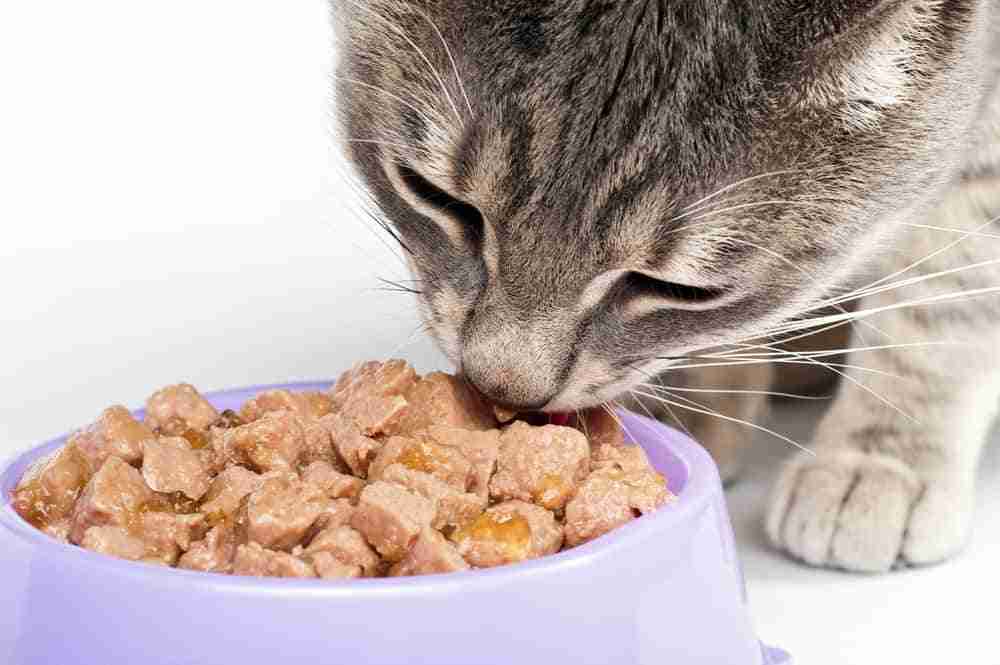Is your cat licking food but not eating? Are you getting concerned and looking for solutions? Here we dissect what is going on and look at the potential solutions to get your cat eating well again.
Are you picky about the food you eat? From paleo to veganism, and even the “carnivore diet,” there are plenty of different lifestyles people choose to lead.
It might surprise you that cats also share similar “preferred” tastes in their dinner bowl. Some cats have food aversions, while others don’t seem to mind what you put in front of them.
When it comes to feeding time, cats are perhaps the fussiest pet. They’re quick to turn up their nose at their dinner, even if they feel hungry.
Cats have a heightened evolutionary sense of smell and taste. The feline evolved over thousands of years to kill and eat meat. We call this animal an “obligate carnivore,” as they need meat to survive.
You can feed your kitty that delicious asparagus with cream sauce. While you think it’s a delicacy, they’ll look at it as if it is garbage.
The original domesticated cat served as a guard over the grain silos and stores. The feline would stalk rats and mice, nibbling on the farmer’s supplies. Essentially, in these times, cats didn’t require feeding; they got everything they needed nutritionally from the vermin they stalked and killed.
However, as societies’ use of cats changed, so did the cat’s diet.
With fewer mice to eat and more time spent inside the house, the cat required nutrition to suit their needs.
As a result, domestic cats started eating cat food. Today, there are dozens of brands and hundreds of cat food products. From wet to dry food, there’s something to suit your cat’s tastes at the dinner table.
If your cat has food fussiness around the dinner bowl, it can develop into strange behavior. Some owners find that their cat may avoid the dinner bowl entirely. Other owners find that their cat only licks food but doesn’t chew it.
What’s the cause behind this strange feline behavior?
Factors Causing Your Cat To Avoid Eating
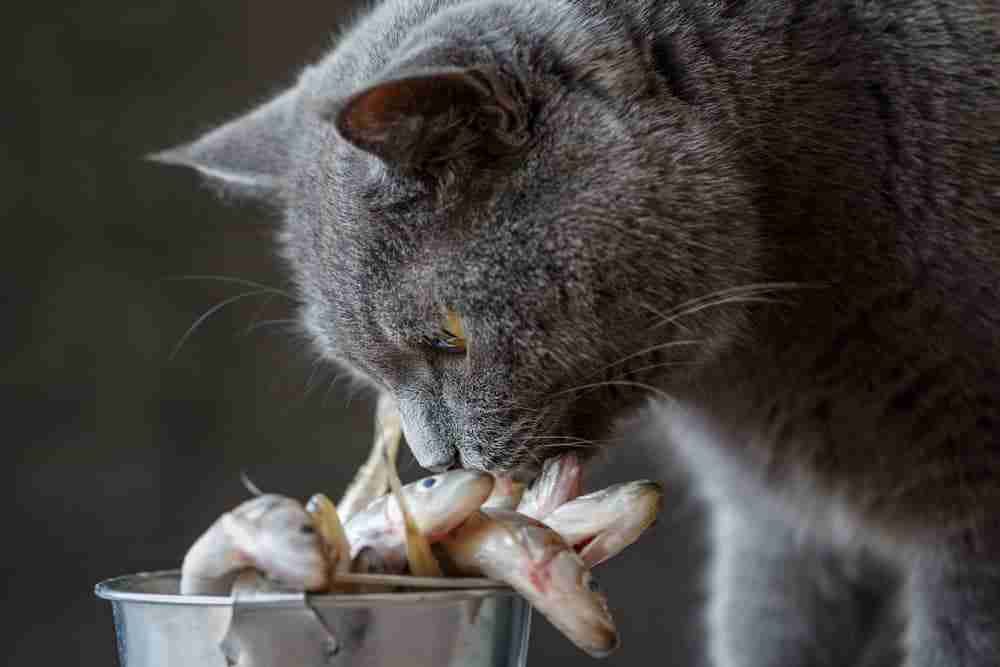
If you find your cat just licks wet food but doesn’t eat it, or other such weird eating behavior it could be due to one of the following reasons:
You Have No Feeding Routine
If you’re feeding your cat at different times of the day, it will cause changes in their behavior and how they interact with food.
When you give your kitty stable dinner times, they won’t try and find food during the day. If you’re out at work during the day, your cat can roam around the neighborhood.
They might chase and eat birds or rats or find another cat’s dinner bowl and eat the food if the other cat isn’t around.
If you create a routine around your cat’s dinnertime, it trains the gut biome to wait for you to bring them food. With less chopping and changing around your cat’s mealtimes, there’s a better chance they’ll finish what you put in their dinner bowl.
You Give the Cat Too Many Treats
Are you feeding your cat too many treats during the day? If you’re at home during the week or on the weekends, do you spoil your cat? We all like to treat our kitty from time to time, but too much of a good thing will come back to get you.
Cats love treats, and nothing is tastier to them than a piece of jerky or raw meat. However, feeding your cat too many treats results in an aversion to their regular food.
When they think they’ll get treats all the time, they’ll starve themselves in the hope you give them more. Some cats may get accustomed to treats, and they start to find their food bland.
The Environment
Your cat needs the right environment to eat. Make sure you feed them in the same place every day to add to your feeding schedule’s consistency. Cats need privacy and security while they eat; it goes back to their genetic instinct and predators.
If you try and feed them out in the open, they’re likely to withdraw and avoid eating. When cats are anxious, they don’t want to eat. In a state of heightened anxiety, your cat is thinking about fleeing, not eating.
Leave your cat in peace for its mealtime, and check how much they eat after each feeding session.
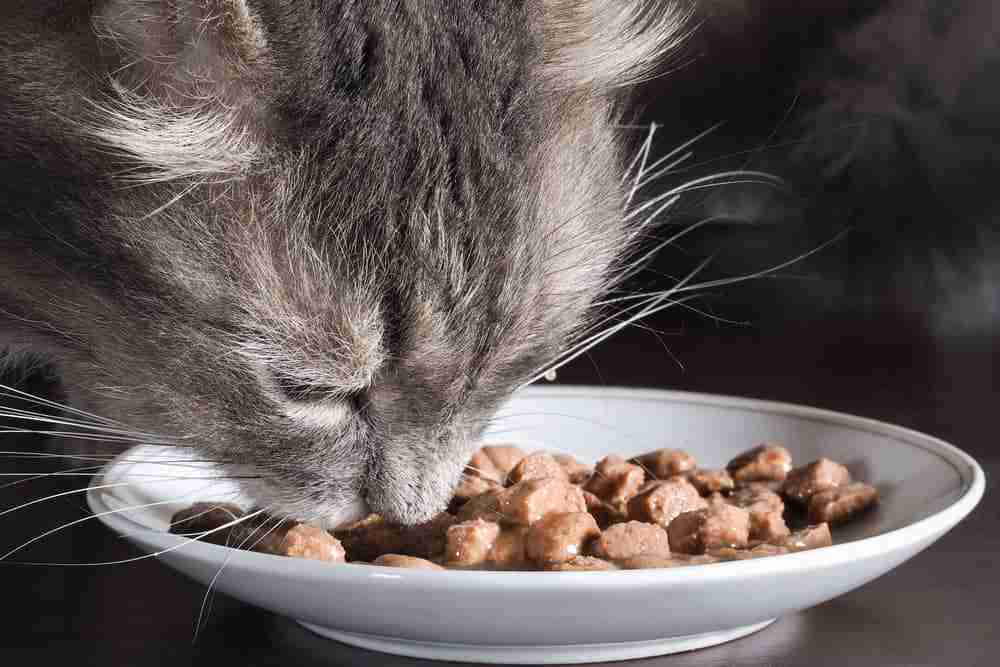
Food Bowl Access
If you have a senior cat, keep the food bowl close to their bed. Cats with arthritis don’t like to walk around too much, and they may avoid feeding if they have to walk a distance to the bowl in another room.
Food Bowl Problems
The food bowl can also present problems for feeding your cat. Here are the most common issues involved with your cat’s dinner bowl.
Shape
Cats don’t like it when their whiskers touch the sides of the dinner bowl. If your bowl diameter is too small, the cat may eat around the sides. They might also lick their food from the sides, avoiding contact with their whiskers on the edge of the bowl. Give them a wide bowl with a shallow depth for the best results.
Height
Cat’s don’t like deep bowls, and they don’t enjoy eating standing up. Most cats sit down when eating at the dinner bowl. Therefore, make sure you keep the bowl on the floor or a flat surface, like a counter. Choose bowls with shallow sides to avoid contacting the whickers on the edges.
Cleanliness
Cat’s are clean animals. If you try and feed them out of a dirty dinner bowl, they’ll look back at your in disgust and walk away. It’s also important to note that some cats have an aversion to detergents like washing liquids. Make sure you rinse out the bowl thoroughly before feeding your cat.
Food Type, Smell, and Its Presentation
The type of food you feed your cat makes a difference in their reaction at the dinner bowl. Some cats prefer wet food, while others will only eat dry kibble.
Food is a complicated topic for your cat, and many of them develop food aversions or strange feeding habits. If your cat is licking her food but not eating, there might be a problem with that specific brand or food product.
Let’s unpack the difference between dry and wet cat foods and how they benefit your cat’s diet.
Dry Cat Food
There are dozens of top cat food brands offering dry cat food products. If you feed your cat dry kibble, there are a few things you need to know about handling the food.
Never leave your cat food out for longer than a day. Kibble comes with a coating of oils and fats, providing flavor and aroma to the food.
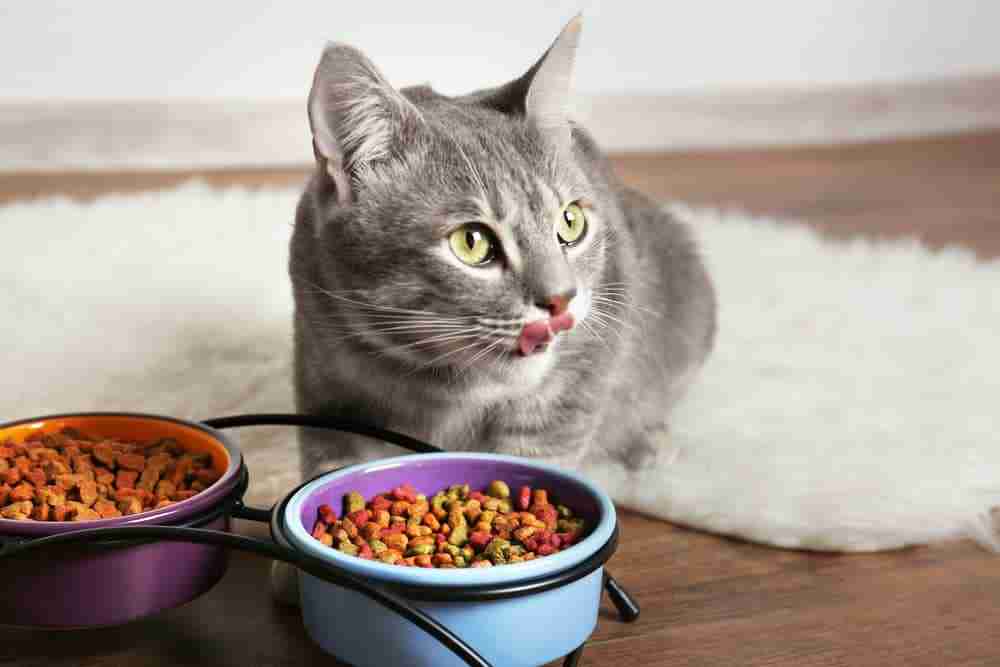
If you leave the food exposed to the air for longer than 24 hours, it results in a breakdown of the kibble’s fatty layer.
As a result of the breakdown, the food loses its flavor and smell, and your cat finds it less appealing. Some owners decide to put uneaten cat food back into the packet to use for the next feeding session. This strategy is a mistake, and it might cause your cat to turn up its nose at the food.
Leaving dry food out overnight makes it absorb moisture, turning it stale. Your cat has a super-sensitive taste and smell, and they’ll find old food unappealing.
When purchasing your pet food, always check the manufacturing date and the product packaging’s best-before date. If you only have one cat, avoid buying large bags of food to save money.
The fats and oils in the kibble turn rancid after a few months, making the food taste terrible to your kitty.
Always throw out any old food from the day before. If your cat didn’t want it yesterday, they sure aren’t going to eat it today.
Wet Cat Food
Wet cat food is an alternative for cats that don’t like dry kibble. Fussy cats tend to prefer wet foods, and chances are your cat is licking their wet food more than dry food.
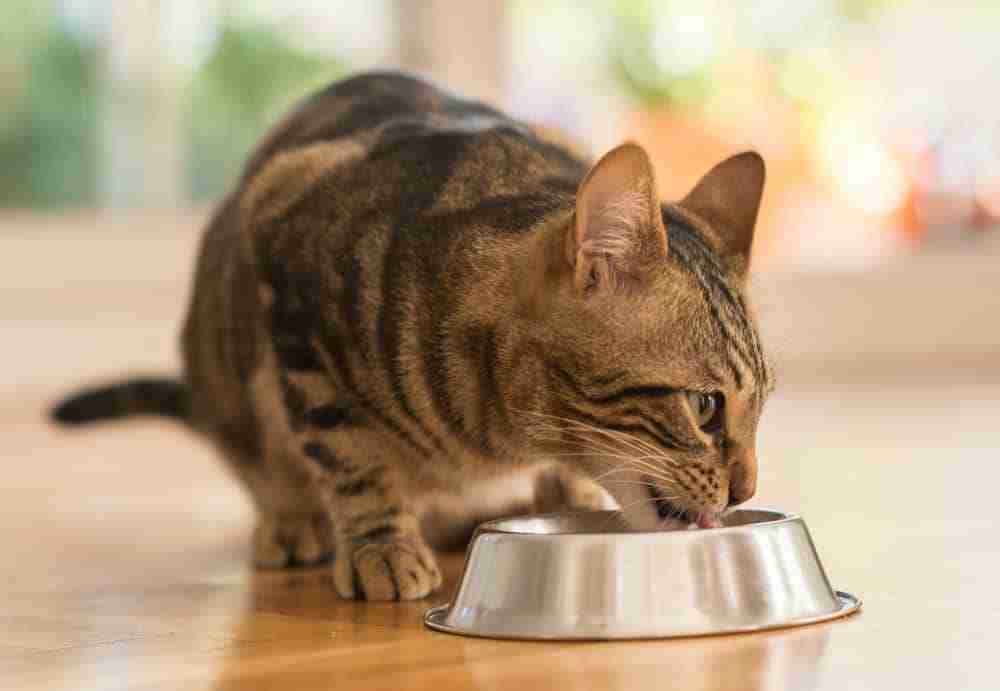
If your cat is licking the food but not eating it, it’s probably enjoying the gravy, but not the taste of the food. You could always try another flavor or another brand.
If you don’t have any success with switching foods, try feeding your cat kibble instead. However, some of the reasons why cats won’t eat wet food are the smell and the food’s mouthfeel.
Food Texture and Mouthfeel
Some cats might prefer food in jelly, while others prefer chunks in gravy or a pate-style food.
If your cat is licking the food but not eating it, try mixing everything to reduce the juices pooling around the edge of the dinner bowl.
In Closing – Never Serve Your Cat Cold Food
One of the biggest issues with cats is the temperature of the food they’re eating. As mentioned, cats are predators, and they used to spend their days catching live prey.
As a result, your cat’s genetics rule its feeding behavior, and they won’t eat cold food. Serving your cat a cold dinner gives it the impression that it’s not fresh, and it’s probably been dead for a while.
Cats aren’t scavengers, and they won’t eat anything “dead” as dogs do. Many cat owners make the mistake of keeping the cat food in the fridge, and then they wonder why their cat doesn’t glance at it.
If your cat is licking their food but not eating then there is plenty of potential solutions to check out. Start by changing out the food and reducing snacks then consider the eating environment. Sometimes just a minor adjustment to daily habits can make a big difference.
